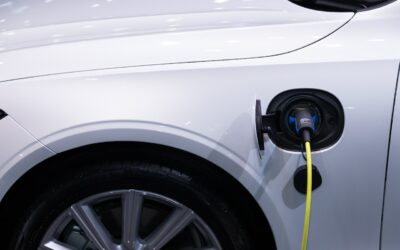This post was originally published on Eco Watch
Solar is a major contributor to the renewable energy mix, with everything from solar lights and heating to solar TVs and refrigerators.
Now, there is the Stella Terra, the first off-road solar-powered car, which recently completed a test drive of 620 miles across north Africa without recharging.
“We are pushing the boundaries of technology. With Stella Terra, we want to demonstrate that the transition to a sustainable future offers reasons for optimism and encourages individuals and companies to accelerate the energy transition,” said Wisse Bos, team manager of Solar Team Eindhoven, in a press release from Eindhoven University of Technology.
Students from Eindhoven University of Technology designed the two-seater, which crossed a variety of landscapes during the test, reported The Guardian.
“Stella Terra must withstand the harsh conditions of off-roading while remaining efficient and light enough to be powered by the sun. That is why we had to design almost everything for Stella Terra ourselves, from the suspension to the inverters for the solar panels,” Bos said in the press release.
The moss green vehicle is powered entirely by solar panels on its rounded roof, which means it can run even in remote areas where there are no electric vehicle (EV) charging stations. It is also designed to drive on multiple surfaces so that it can be used for emergency deliveries and services, said the team’s events manager Thieme Bosman, according to CNN.
“Morocco has a huge variety of landscapes and different surfaces in quite a short distance,” Bosman said, and the car was tested “on every type of surface that a car like this could encounter.”
With a top speed of 90 miles per hour, the solar car’s battery has a range of about 441 miles on regular roads and 342 miles off-road on a sunny day. When the sun is obscured by clouds, the Stella Terra could have a range of about 31 miles or even less.
“It was an incredible trip with a positive ending. Stella Terra’s efficiency was hard to predict. That’s why we weren’t sure if we would make it on solar power. During the ride, Stella Terra turned out to use 30 percent less energy than expected. We were able to drive the entire trip on the sun’s energy and did not depend on charging stations,” Bos said in another press release from Eindhoven University of Technology.
Bos said the solar vehicle is a decade ahead of any other car on the market, The Guardian reported.
“We are pushing the boundaries of technology,” Bos said.
Stella Terra comes with a rechargeable lithium-ion battery so it can run over shorter distances on less sunny days. Its solar panels also provide enough electricity for phone and camera chargers and cooking devices.
After initial steering system issues, the car did well in its road tests from Tangier, Morocco, through Fes to the Sahara Desert.
“We hope this can be an inspiration to car manufacturers such as Land Rover and BMW to make it a more sustainable industry. The car was actually very comfortable in the off-road conditions as it is very light and does not get stuck,” said Bob van Ginkel, the project’s technical manager, according to The Guardian.
The car’s solar panel converter had 97 percent efficiency in turning absorbed sunlight through the photovoltaic cells into electrical charge.
The weight of Stella Terra is about a quarter of an average midsize SUV, which requires larger and heavier batteries to power them than standard EVs, reported CNN.
“(One of) the benefits of the solar panels on top is that we can have a much smaller battery because we are charging while driving,” said van Ginkel.
The car also has “lightweight and robust” materials to reduce its weight, as well as an aerodynamic design that lessens drag.
Solar Team Eindhoven previously produced a campervan, and Stella Terra includes elements of its design. The car has seats that fully recline into a bed, and its solar panels extend to both maximize its charging capabilities and create an awning to provide shade.
One of the biggest challenges in building vehicles that run on solar power is that surface area for the solar panels is limited. Production of the highly efficient solar panels capable of generating enough power for long distances is expensive.
Sponsors provided funding for the not-for-profit team that designed Stella Terra. Van Hulst said more work needed to be done on the design before it would be ready to be put on the market.
“We aim to also inspire not only everyday people, but also the automotive industry, the Ford and Chryslers of the world, to think again about their designs and to innovate faster than they currently do,” Bosman said, as CNN reported. “It’s up to the market now, who have the resources and the power to make this change and the switch to more sustainable vehicles.”
The post Solar-Powered Car Completes 620-Mile Test Drive Across North Africa appeared first on EcoWatch.





0 Comments